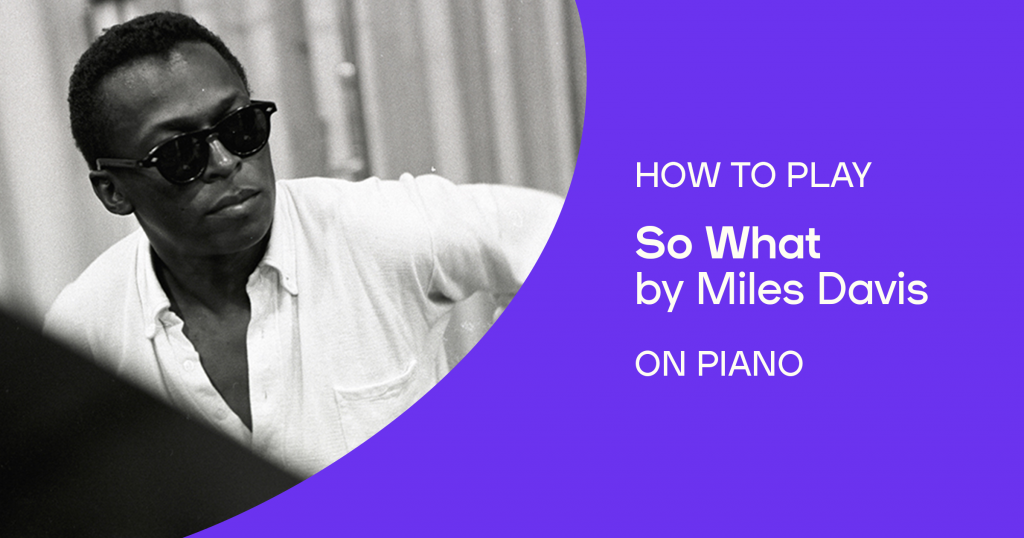If you’re into jazz, then I highly recommend learning how to play “So What” by Miles Davis on piano. I love all styles of music, but jazz has a special place in my heart. In fact my degree was in Jazz Piano Performance, so while I studied all styles, my main focus was on this American art form and all of its intricacies.
We at Playground Sessions also hold jazz dearly because our co-founder and spokesman, Quincy Jones, is a legend in the jazz community for his work over decades for a genre constantly being redefined.
Say what you will about Miles Davis, but we can all agree that his was one of the most influential voices in jazz. And arguably one of his most famous and accessible tunes throughout all of his explorative phases comes from his most recognized 1959 record, Kind Of Blue: a swinging song called “So What.”
It was my absolute pleasure to bring our students a lesson on “So What” because it swings hard but it’s also very playable. And, one of my favorite jazz pianists ever, Bill Evans, graced this recording with a certain style of chord voicings that would become known as “So What Voicings.” It’s a pianistic jazz song with Miles at the helm, from a world famous jazz record. Let’s do this!
Introduction to “Quartal Voicings”
We are so used to thinking about chords as triads built by stacking notes in intervals of thirds. Think C major triad: C, E, G. But in jazz, we tend to steer away from stacks of thirds and instead voice chords with more intervals of fourths. This opens up the harmony a bit more, puts more space between notes. It also allows a soloist to have a little more leeway with their note choices.
So in jazz, we might voice a C major chord more like this: E, A, D, G, C. We do have C on the top of the chord, but the root is not on the bottom. Instead, our left hand would play E, A, and D (all intervals of fourths). The right hand would play the top G and C (another fourth interval).
We have our triad’s core notes represented (C, E, and G), but we also have a few extra notes: A and D. These are what I call “color notes” — notes that are not in the core chord, but add a little extra personality to the chord. And since they’re still in the key of C (A is the 6th scale degree and D is the 2nd), we know that they will still work.
“So What” has swing!
Swing refers to a certain rhythmic approach, typically involving 8th notes. Instead of dividing a quarter note beat (2 evenly spaced 8th notes), we do something different with swing. With swing, we give the first 8th note a longer duration and the 2nd 8th note a shorter duration. The result is a kind of lop-sided effect — hence the term “swing.”
This rhythmic style is crucial for understanding and playing jazz! However, not all jazz songs have swing. But you must understand swing to achieve a certain level of jazz literacy. This song is a perfect learning tool for achieving your swinging goals.
Now it’s your turn to play “So What” by Miles Davis
If you love using your favorite songs to learn the piano, check out “So What” by Miles Davis at the Playground Sessions YouTube channel.
If you like what you see you can download our app to learn the rest of this song with our interactive sheet music.
Subscribe to Playground’s YouTube channel for more song lesson videos.
Download the Playground Sessions piano learning app for full interactive learning.
Thinking about learning piano? Read our complete guide on how to play piano.
